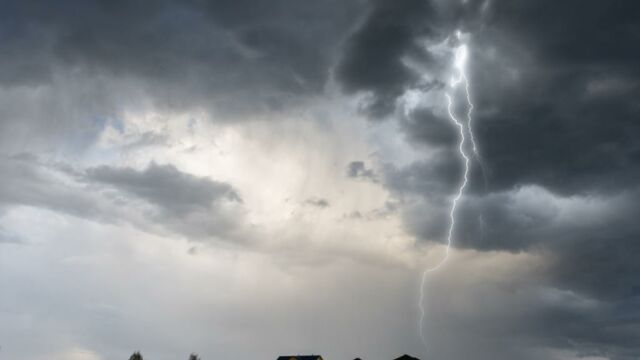Here's a rule of life we don't often think about: in the event of a thunderstorm, avoid the mad dash, take a step back, find a decent shelter, put some physical distance between you and your loved ones, and drop anything containing metal. If nature does surprise you with a thunderstorm, these tips could well save you from an unwelcome encounter with lightning.
Discover our latest podcast
Understanding the danger of lightning
Think of a thunderstorm as a bolt from the blue: it can strike without warning. In either case, when you're caught off guard, it's so easy to make the wrong choice. So it's best to be prepared!
A thunderstorm is an atmospheric disturbance that generates electrical charges in the air, sometimes resulting in a very tangible threat: lightning. On average, 4 million flashes of lightning strike the Earth every day, and on British soil alone, 500,000 impacts are recorded every year, causing around 200 victims, including 20 deaths. A lightning strike may not always be fatal, but it can cause serious physical or mental after-effects, with 70% of survivors suffering from paralysis, hearing and vision problems, and much more besides...
So before you start running, adopt the right reflexes!
Read more:Thunderstorm warning issued with risk of flash flooding, here's how it could affect you
The danger of running in a thunderstorm
When a thunderstorm occurs during an outdoor activity, such as cycling, horseback riding, swimming, or a simple walk, it's advisable to interrupt your activity and take shelter. However, taking shelter doesn't necessarily mean running for cover.
Running can, in fact, increase your risk of being struck by lightning, and the proof is that when we run, our legs are often spread apart, which can increase the risk of step stress. In other words, if lightning strikes, the current spreads between your legs, and the greater the distance between your feet, the stronger the current. What's more, running can release energy that facilitates lightning's path to the ground, and thus intensifies in the body.
Read more:Mysterious space storms could destroy Internet and global infrastructure
How to protect yourself during a thunderstorm
Finding the right shelter
When a storm hits, the idea of taking shelter under a tree may seem like THE solution. However, this option should be avoided at all costs. Because of its height, a tree can become an actual lightning magnet. However, as our bodies are better conductors than wood, the electrical discharge would be redirected straight back at us, even when sheltered by branches.
It's best to find a shelter made of stone, or another material with low conductivity, such as plastic. Of course, metal structures and damp walls should be avoided at all costs, as they facilitate electrical conduction (needless to say, water is electricity's best friend...). Using common sense and adopting the right reflexes can save your life in the event of a storm.
So remember: take shelter, but away from the trees, and adopt a safe position, crouching, feet together and arms folded. All this, of course, without running...!
Even after the storm has passed, remain cautious
Lightning can still strike even if the thunder has stopped, so open your eyes and watch for signs of the storm's end. However, don't rely on the fact that the rain has stopped to declare that all is well. Instead, wait 30 minutes or so after the last rumble before resuming your outdoor activities - it could well save your life. They say lightning doesn't strike the same place twice, so think again...!
Read more:Rare white rainbow spotted in Florida, here's the explanation for this phenomenon
This article has been translated from Oh!MyMag FR.















